Chemical Methods of Control Antimicrobial Drugs
It is bacteriostatic at concentrations of 011 and is bactericidalfungicidal at 12. NIAID has a substantial research program to spur development of new therapeutics against drug-resistant viruses bacteria parasites and fungi and to identify.

Dose Duration And Cost Of Antibiotic Drugs And Trial Comparators Download Table
Later the word antibiosis against life for this inhibition and called the inhibiting substance Antibiotic.

. Determined by testing for bacterial growth in dilutions of the antibiotic in nutrient broth 2. Virus-specific enzymes eg reverse transcriptase integrase inserts viral DNA into host DNA proteases process viral proteins Viral DNA replication transcription drugs inhibiting these processes may kill host cell also Fusion of enveloped viruses. Chemical control refers to the use of disinfectants antiseptics antibiotics and chemotherapeutic antimicrobial chemicals.
Phenol also known as carbolic acid was one of the first chemicals which was used as an antimicrobial agent. Antimicrobial activity is observed as a clear circular zone of inhibition around the drugchemical-impregnated disk. Effective alone or in compounds.
The rise of antimicrobial-resistant microbes has led to an urgent need to preserve the efficacy of current antibiotics develop new ones and identify alternative treatment strategies. Uses Mueller-Hinton agar which allows antimicrobial agent to diffuse freely. USING ANTIMICROBIAL CHEMOTHERAPY TO CONTROL MICROORGANISMS.
Commonly used chemical preservatives include sorbic acid benzoic acid and propionic acid and their more soluble salts potassium sorbate sodium benzoate and calcium propionate all of which are used to control the growth of molds in acidic foods. We develop antimicrobial testing methods and standard operating procedures to measure the effectiveness of hard surface disinfectants against. The development of chemical synthesis has helped to produce the synthetic components which act as an antimicrobial agent against the pathogenic bacteria.
Standardized agar diffusion methods. The method of choice depends on. Learn vocabulary terms and more with flashcards games and other study tools.
Chemical Methods of Control. Methods are available for the following types of antimicrobial. Inhibit enzyme activity 2 Inhähit cell wall eynthenie h.
The diameter of the zone of inhibition measured in millimeters and compared to a standardized chart determines the susceptibility or resistance of the bacterial pathogen to the drug or chemicalFigure PageIndex1. Keep in mind that chemical treatment is only one of many methods available to control microbial growth. Pasteur and others observed that infecting an animal with Pseudomonas aeruginosa protected the animal against Bacillus anthracis.
Is active ingredient of. Chemical methods of control. Pathogenic bacteria can be killed by synthetic components at low concentrations.
It has high antiseptic properties. Provides a single-source reference for readers interested in the development of analytical methods for analyzing non-antimicrobial veterinary drug residues in food Provides a comprehensive set of information in the area of consumer food safety and international trade Covers general issues related to analytical quality control and quality assurance measurement. A cidal control measures such as sterilization by heat eg.
Physical control includes such methods of control as high or low temperature desiccation osmotic pressure radiation and filtration. Biofilm samples collected from 10 removable dentures were subjected to 10 disinfection protocols. 1 sodium hypochlorite for 10 min positive control.
Read the entire lab Exercise 25 and complete these questions. Start studying Chemical methods of control. The cell wall cell wall becomes fragile and cell lyses.
Each of these preservatives is. When MIC is determined inhibition zones can be correlated with MICs. Listed Type of Antimicrobial Agent b β-lactams Method of Action 1.
Antimicrobial Agents Modes of Action Cellular targets of physical and chemical agents. Cl 2 H 2 O ----- H Cl- HOCl Hypochlorousacid u Used to disinfect drinking water pools and sewage. Antimicrobial Drugs Read Exercise 25 In this lab the focus will be on how effectiveness of antibiotics differs among bacteria especially differences in cell walls.
The cell membrane - loses integrity. DISINFECTANTS ANTISEPTICS AND SANITIZERS. Some antimicrobial drugs detergents and alcohol 2.
Chemical preservatives are used to inhibit microbial growth and minimize spoilage in some foods. Targets of Antiviral Drugs Antiviral drugs generally target the following. Learn vocabulary terms and more with flashcards games and other study tools.
Start studying Exercise 25. U Sodium hypochlorite NaOCl. Disinfection is the elimination of microorganisms but not necessarily endospores from inanimate objects or surfaces whereas decontamination is the treatment of an object or inanimate.
Cellular synthetic processes DNA RNA. Chemical Methods of Control. To investigate the antimicrobial efficacy of different chemical agents used for denture cleaning.
Autoclaving or by ultraviolet radiation and b static control measures such as freezing and drying. 5 Chemical Methods of Microbial Control Types of Disinfectants 2. Sterilization is the process of destroying all living organisms and viruses.
Diluted sodium hypochlorite for 10 min. 4 rows Some synthetic drugs control bacterial infections by functioning as antimetabolites competitive. Differences in effectiveness are often linked to differences in the cell walls.
The results showed that artificial agarwood obtained by comprehensive stimulated method formic acid plus fungal inoculation and extended longer inducing time have better antimicrobial activity which is similar to the result of chemical analysis. Distilled water for 30 min negative control. Minimum inhibitory concentration MIC 1.
Antimicrobial drugs involves the use of chemicals to prevent and treat infectious diseases. Detergent surfactants 9 3. U When mixed in water forms hypochlorous acid.
These synthetic components are also called as antibiotics. U Chlorine is easily inactivated by organic materials. Using your textbook or other references and the chart on page 197 match each of the antimicrobial agenta in the following table with its type and method of action.

Micro Lab Ex 25 Chemical Methods Of Control Antimicrobial Drugs Pdf Course Hero

Solved 4 Using Your Testbook Or Other References And The Chegg Com

Major Antibiotic Families And Their Mechanisms Of Action Download Table

Antibiotics Classification According To Chemical Structure Download Table

Solved Microbiology Lab Exercise 25 Chemical Methods Of Chegg Com
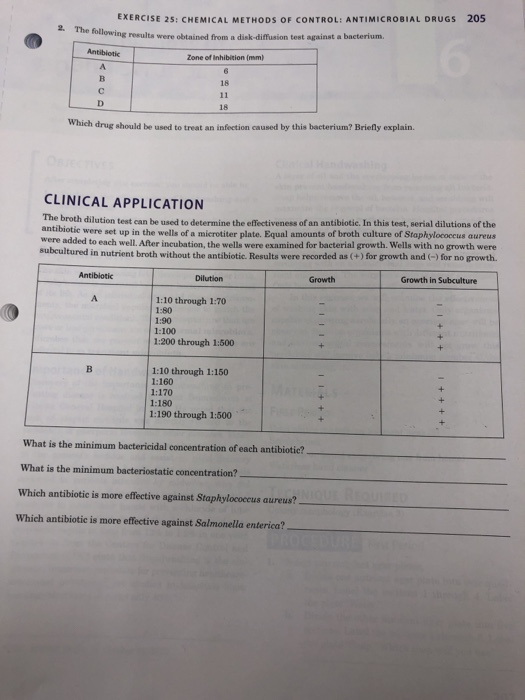
Solved 205 Exercise 25 Chemical Methods Of Control Chegg Com
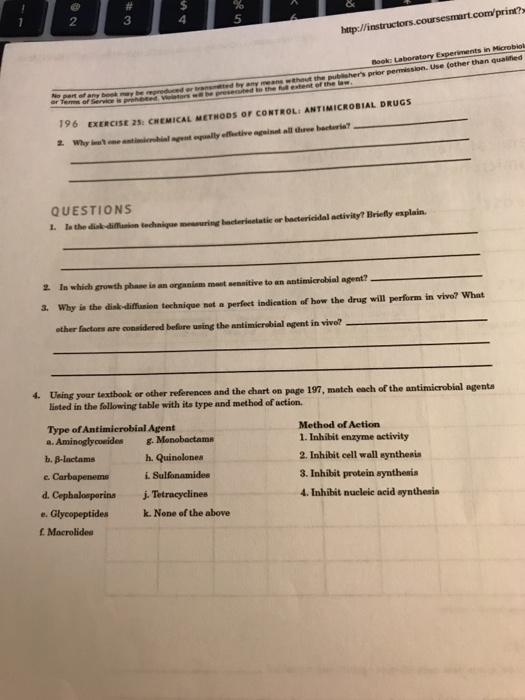
Solved 2 3 4 5 Http I R Than 196 Exe 6 Exercise 25 Chegg Com
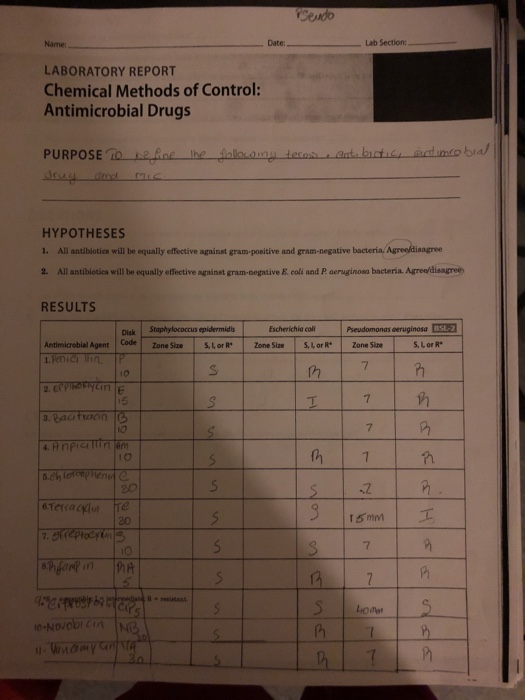
Solved Lab Section Date Name Laboratory Report Effectiveness Chegg Com

Dose Duration And Cost Of Antibiotic Drugs And Trial Comparators Download Table

Exercise25laboratoryreportchemicalmethodsofcontrolantimicrobialdrugs Pdf Sofia Isaksson Bio 203a 07 01 2017 Exercise 25 Laboratory Report Chemical Course Hero
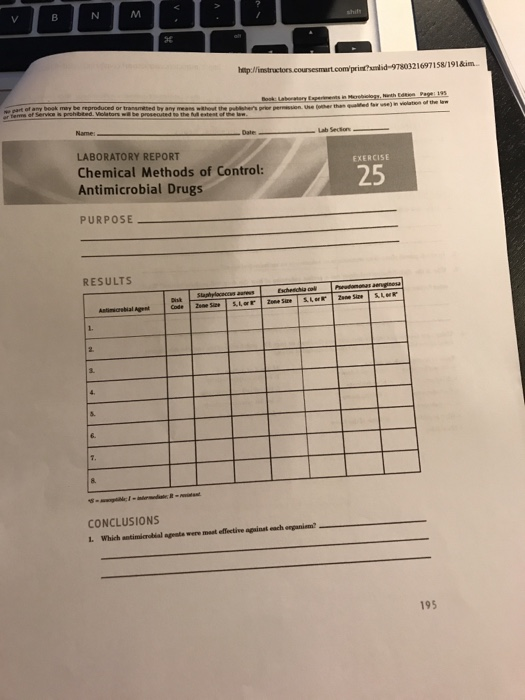
21697158 191 Im Name Lab Section Laboratory Report Chegg Com

Lab Ex 02 Chemical Methods Of Control Antimicrobial Drugs Pdf Objectives After Completing This Exercise You Should Be Able To 1 Dene The Following Course Hero

Zone Diameter Interpretive Standards Chart For The Determination Of Download Table

Micro Lab Ex 25 Chemical Methods Of Control Antimicrobial Drugs Pdf Course Hero

Name Date Lab Section Laboratory Report Chemical Chegg Com

Solved Microbiology Lab Exercise 25 Chemical Methods Of Chegg Com

Antibacterial Drugs From Basic Concepts To Complex Therapeutic Mechanisms Of Polymer Systems Intechopen

Solved Chemical Methods Of Control Antimicrobial Drugs Chegg Com
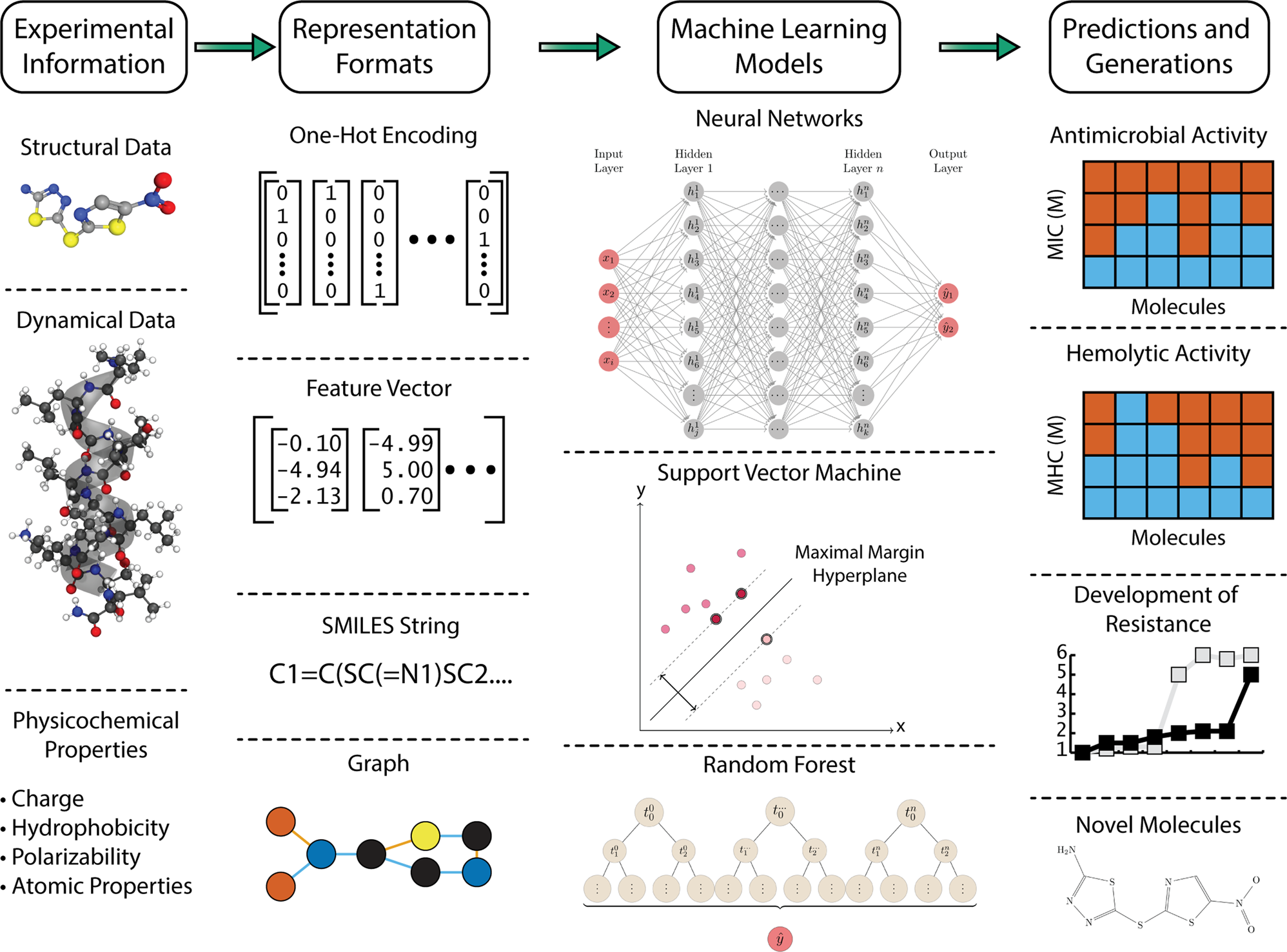
Accelerating Antibiotic Discovery Through Artificial Intelligence Communications Biology
Comments
Post a Comment